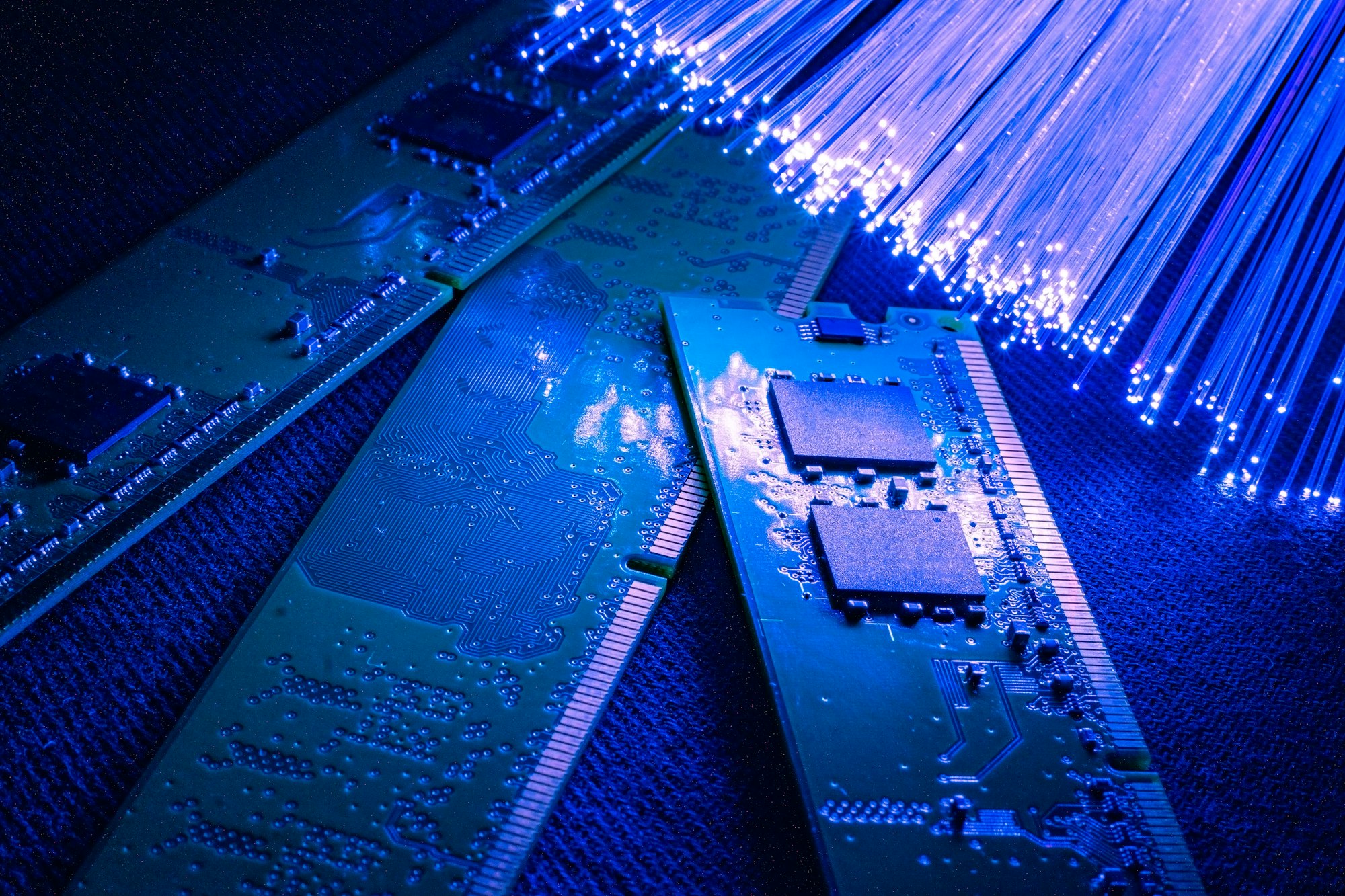Upgrading RAM in your Lenovo ThinkStation P620 can significantly enhance your system's performance, allowing for smoother multitasking and faster load times. This guide provides clear, step-by-step instructions to help you install and configure extra RAM effortlessly. Whether you're a seasoned tech enthusiast or a newcomer, these tips will empower you to unlock the full potential of your workstation without the hassles. Let's get started on maximizing your setup!
Understanding the Benefits of Extra RAM
In the realm of computing, RAM (Random Access Memory) plays a pivotal role. It acts as the system's short-term memory, allowing for quick access to data and applications. The more RAM a computer has, the more efficiently it can handle multiple tasks at once. This is particularly true for workstations like the Lenovo ThinkStation P620, where performance is paramount.
Additional reading : How to Set Up a Lightning-Fast and Secure VPN Connection on Your ASUS RT-AX86U Router: A Step-by-Step Guide
Performance Enhancements for Lenovo ThinkStation P620
The Lenovo ThinkStation P620 stands out due to its ability to support substantial amounts of RAM. This feature significantly boosts its performance, making it an ideal choice for demanding tasks. With additional RAM, the P620 can manage complex computations and intensive applications more smoothly, reducing lag and increasing efficiency.
When Extra RAM is Most Beneficial
There are specific scenarios where extra RAM can be especially advantageous. For instance, professionals working with large datasets, high-resolution video editing, or 3D rendering will notice a marked improvement in performance. Moreover, multitasking becomes seamless, allowing users to run multiple applications simultaneously without a hitch. Thus, investing in more RAM for the Lenovo ThinkStation P620 can be a game-changer for those requiring robust computing power.
Topic to read : Essential Firmware Configurations to Maximize 4K Streaming Performance on Your Intel NUC 8
Tools and Materials Needed for Installation
Before embarking on the RAM installation process for your Lenovo ThinkStation P620, it's crucial to gather the right tools and materials. This ensures a smooth and safe upgrade, minimising the risk of damage to your system.
Essential Tools for Installation
To begin, you'll need a screwdriver suitable for opening your workstation's casing. An anti-static wrist strap is also highly recommended to prevent static electricity from damaging sensitive components. Additionally, having a clean, well-lit workspace can greatly aid in the installation process.
Recommended RAM Specifications
When selecting RAM, ensure it meets the hardware requirements of the Lenovo ThinkStation P620. This model supports DDR4 ECC (Error-Correcting Code) memory, which is crucial for maintaining system stability during intensive tasks. It's advisable to consult your workstation's manual or Lenovo's official website for detailed specifications.
Purchasing Compatible RAM Modules
For purchasing, consider reputable retailers or online platforms that offer certified compatible RAM modules. Brands such as Crucial and Kingston often provide reliable options. Ensuring compatibility not only enhances performance but also prolongs the lifespan of your workstation.
Preparing Your Workspace
Before starting the RAM installation preparation, setting up a safe workspace is crucial. A clean, well-lit area ensures you can see all components clearly, reducing the chance of errors. Clutter can lead to misplaced parts or accidental damage, so tidy up your area before beginning.
Safety Precautions
Taking the right safety precautions is essential to protect both you and your Lenovo ThinkStation P620. Wearing an anti-static wrist strap is advisable to prevent static electricity, which can harm sensitive components. Additionally, avoid working on carpeted surfaces, as they increase static buildup.
Grounding Yourself
Proper grounding is necessary to prevent static discharge. Here’s how to do it:
- Use an Anti-Static Wrist Strap: Attach it to your wrist and clip the other end to a metal part of the workstation.
- Touch a Metal Object: If you don’t have a wrist strap, frequently touch a grounded metal object to discharge static.
- Avoid Synthetic Clothing: Wear cotton to minimise static buildup.
By following these steps, you ensure a safe and efficient RAM installation process, protecting your investment and enhancing your workstation’s performance.
Step-by-Step Installation Process
Upgrading your Lenovo ThinkStation P620 with additional RAM is a straightforward process if you follow these steps carefully.
Powering Down and Unplugging the Device
Before beginning the RAM installation steps, ensure your workstation is powered down. Unplug all cables to prevent electrical hazards. This simple precaution protects both the device and the installer from potential damage or injury.
Opening the Case
To access the RAM slots, you must first open the workstation's case. Use a suitable screwdriver to carefully remove the screws securing the side panel. Once unscrewed, gently slide the panel off to reveal the interior components. Handle the panel with care to avoid damaging the casing.
Inserting the RAM Modules
Locate the RAM slots on the motherboard. Align the RAM module with the slot, ensuring the notches match. Firmly press the module into place until the clips on either side snap into position. This secures the RAM and ensures proper connection.
- Tip: If the module doesn’t fit easily, check alignment and avoid forcing it.
By adhering to these steps, you can efficiently complete your Lenovo ThinkStation P620 upgrade, enhancing its performance with ease.
Configuring BIOS Settings
After physically installing the new RAM in your Lenovo ThinkStation P620, it's crucial to adjust the BIOS configuration to ensure the system recognises the upgrade. Accessing the BIOS is the first step in this process.
Accessing BIOS on Lenovo ThinkStation P620
To enter the BIOS, restart your workstation and press the designated key (usually F1 or F2) during the boot process. This grants access to the BIOS settings, where you can verify if the new RAM is detected.
Adjusting RAM Settings
Once inside the BIOS, navigate to the RAM settings section. Here, you can confirm the system has recognised the additional memory. If not, you may need to manually configure the settings. Ensure the memory frequency and timings are set correctly to match the specifications of the new RAM modules.
Saving Changes and Exiting
Before exiting, it's vital to save any changes made to the BIOS configuration. Look for the save and exit option, often found under the "Exit" tab. Failing to save changes can result in the system not acknowledging the newly installed RAM, negating the performance benefits.
Verifying RAM Installation
Once the new RAM is installed in your Lenovo ThinkStation P620, conducting a RAM verification is essential to ensure everything is functioning correctly. Begin by powering on the workstation and observing the boot sequence for any error messages that might indicate a problem.
How to Check if the New RAM is Recognized
To verify if the system recognises the new RAM, access the Task Manager in Windows by pressing Ctrl + Shift + Esc. Navigate to the Performance tab and select Memory. Here, you can see the total RAM available, confirming if the installation was successful.
Tools or Software to Monitor RAM Performance
For a more detailed analysis, consider using software like CPU-Z or HWMonitor. These tools provide comprehensive insights into your system's memory specifications and performance metrics, ensuring the RAM operates at its optimal capacity.
Common Signs of Successful Installation
After a successful installation, you should notice:
- Increased available memory in system settings.
- Improved multitasking capabilities.
- Absence of boot errors or system instability.
By following these steps, you can confidently verify the new RAM's integration, ensuring your workstation runs efficiently.
Troubleshooting Common Issues
When upgrading the Lenovo ThinkStation P620, encountering RAM troubleshooting issues is not uncommon. Identifying and resolving these problems ensures optimal performance.
Identifying Installation Problems
Common installation problems include the system not recognising the new RAM or unexpected errors during boot. If the RAM is not detected, first ensure it is seated correctly in the slot. Misalignment or loose connections often cause recognition failures.
Steps to Take if RAM is Not Recognized
If the RAM remains unrecognised after reseating, check the BIOS settings for accurate configuration. Verify that the memory frequency and timings align with the RAM's specifications. Additionally, inspect the RAM modules for any physical damage.
Tips for Resolving Performance-Related Problems
Performance issues post-installation may stem from incompatible RAM. Ensure the RAM is compatible with the Lenovo ThinkStation P620 specifications. If performance lags persist, consider running memory diagnostics using tools like MemTest86 to identify potential faults.
These steps help troubleshoot and resolve common issues, ensuring your workstation operates efficiently.
Enhancing Performance Beyond RAM
While increasing RAM is a significant step towards enhancing performance, there are other performance optimization strategies for the Lenovo ThinkStation P620.
Hardware Upgrades
Beyond RAM, consider upgrading the storage to a solid-state drive (SSD). SSDs offer faster data access speeds compared to traditional hard drives, significantly reducing load times. Additionally, investing in a high-performance graphics card can boost capabilities for tasks like video editing or 3D rendering.
Software Optimizations
Software plays a crucial role in maximizing hardware potential. Regularly updating your operating system and drivers ensures compatibility and improved performance. Utilising performance-enhancing software, such as system cleaners and optimizers, can help manage resources effectively and maintain speed.
Best Practices for System Efficiency
Maintaining efficiency involves routine practices. Regularly clearing temporary files and defragmenting drives can prevent slowdowns. Monitoring system performance using built-in tools or third-party applications helps identify bottlenecks. Additionally, setting up scheduled maintenance tasks can automate these processes, ensuring your workstation remains in optimal condition.
By implementing these upgrades and practices, you can achieve a well-rounded enhancement of your Lenovo ThinkStation P620’s performance.
User Experiences and Reviews
Exploring Lenovo ThinkStation P620 reviews reveals a wealth of insights from users who have upgraded their RAM. Many users report significant performance enhancements, particularly in multitasking and handling intensive applications. One user noted, "The additional RAM transformed my workflow, allowing seamless operation of multiple programs." Such testimonials underscore the tangible benefits of RAM upgrades in real-world scenarios.
However, not all feedback is entirely positive. Some users faced challenges during the upgrade process, particularly with compatibility and installation. One common issue was ensuring the RAM was correctly seated in the slots. Fortunately, users found solutions by carefully following installation guides and double-checking connections. Another user suggested, "Consulting the workstation manual was invaluable for avoiding setup errors."
Overall, the user feedback highlights the importance of proper preparation and understanding of the system's specifications. By addressing these challenges, users can fully leverage the enhanced capabilities of the Lenovo ThinkStation P620, achieving a smoother and more efficient computing experience.
Conclusion and Next Steps
Completing the RAM installation on your Lenovo ThinkStation P620 marks a significant step in boosting your workstation's performance. The meticulous process—from preparing your workspace to configuring BIOS settings—ensures that your system operates at its full potential. With the successful integration of additional RAM, users can expect enhanced multitasking abilities and smoother handling of demanding applications.
Beyond this upgrade, there are further opportunities to enhance your system. Exploring additional upgrades, such as installing a solid-state drive (SSD) or upgrading the graphics card, can provide even greater performance gains. These enhancements complement the RAM installation, offering a more robust computing experience.
For those interested in expanding their knowledge, numerous resources are available. Online forums, Lenovo's official support pages, and user communities offer valuable insights and troubleshooting tips. Engaging with these resources can aid in any future upgrades or system optimizations, ensuring you make informed decisions.
By embracing these next steps, you can continue to elevate your Lenovo ThinkStation P620's capabilities, keeping your workstation efficient and future-ready.






